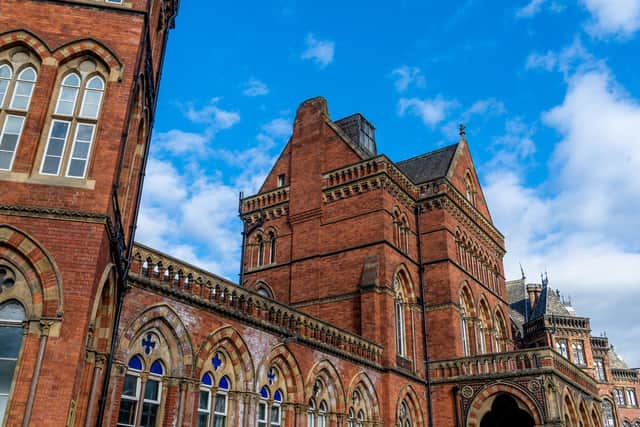Historian's bid to trace lost 'loot' plundered by the British during colonial war in Ethiopia - that was last seen in Leeds General Infirmary in 1868
Andrew Heavens has tracked down references to plunder including part of an African queen’s robe that British soldiers took home with them following a campaign in Ethiopia, then known as Abyssinia, in 1868.
Several of the soldiers came from Leeds, and donated their war souvenirs to a national exhibition of ‘works of art’ that was held at the then-newly-built Leeds General Infirmary on Great George Street later the same year.
Advertisement
Hide AdAdvertisement
Hide AdHowever, Mr Heavens has found no information about where the valuable items were then sent, and does not know whether the soldiers’ families kept them or if they became part of museum or private collections.


He is now asking people to check attics and cupboards for the missing treasure, the significance of which they may not be aware of.
Mr Heavens’ new book, The Prince and the Plunder, deals with the skirmish, which broke out when the Emperor of Abyssinia took European captives, including the British Consul. Gold crowns, manuscripts and processional crosses were all brought back to Britain.
Mr Heavens said: “At least some of those treasures must still be out there somewhere. It would be wonderful to track them down. Each item is a missing jigsaw piece in the story. I would be very grateful if people could have a rummage around and see what they find.”
Advertisement
Hide AdAdvertisement
Hide AdAlthough some of the loot ended up in the British Museum, British Library and Victoria & Albert Museum, hundreds of smaller, less valuable pieces were brought back in private soldiers’ luggage and many vanished. Only five Leeds residents, some of whom had been part of the invasion force, loaned artefacts to the hospital’s exhibition, which raised money towards the building of the infirmary.
A J Hannan, who served with the Third Dragoons, gave a string of coloured beads. There were two manuscripts, a shell projective, a brass cannonball and a fragment of chain worn by an Ethiopian captive donated by H D Birchall. W Martin of the 33rd Regiment also contributed a portion of chain and a piece of brocade from the Ethiopian Queen’s robe. Private T Goodwin, also Third Dragoons, loaned an anklet, silver ornament, pistol, drinking horn, comb, fragment of armour and four strips of manuscript. Mr E Smart contributed two illuminated scrolls and part of a third.
“After the exhibition, most of these small items were probably shoved into cupboards or trunks or attics and forgotten,” added Mr Heavens.
“In a way, these smaller items are more interesting than the bigger treasures. The cannonball and shell would give a real insight into the emperor’s artillery – the first of its kind developed in Africa. The fragment of the queen’s robe is a link to a major figure in Ethiopian history.
Advertisement
Hide AdAdvertisement
Hide Ad“You could have a real piece of British-African history sitting in your cupboard. If you have any letters or diaries about the objects and how they were taken, that would be even better.”
Emperor Tewodros II imprisoned British consular officials and missionaries in the mid-1860s, leading to Britain sending a huge military force to the mountainous kingdom to free them. The fortress of Magdala was razed and looted.
His six-year-old son, Prince Alemayehu, was taken back to Britain at the request of his father following the Emperor’s suicide, as he feared the boy’s life would be in danger from a rival claimant to the throne. After meeting Queen Victoria and attending several top public schools, he ended up living in the Leeds suburb of Headingley with his tutor Cyril Ransome – father of Swallows and Amazons author Arthur. He died aged 18 in 1879. His remains were repatriated to Ethiopia in 2007.
Anyone who believes they may known of the whereabouts of any of the items is asked to contact Mr Heavens at [email protected].
